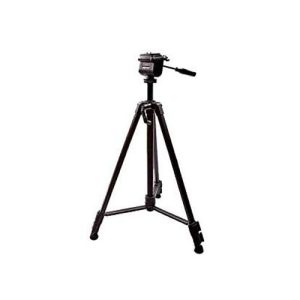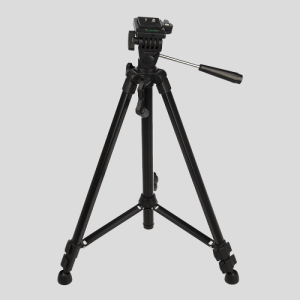By Caroline Theuri and Brian Yatich
As a critical enabler of the economy, the internet has played a crucial role in accelerating economic growth and creating jobs in several countries across the globe. Small businesses in particular have harnessed the internet to overcome traditional barriers such as lack of access to proper education or skills. It has also aided in exporting and transfer of products and services across national and international markets.
However, with this promising possibility, Internet access in Kenya remains a key challenge, coupled by poor infrastructure and low levels of penetration.
According to the World Bank, with more internet access, Kenya has the potential of closing the digital divide and to lower its employment rates by creating more job opportunities for people with digital skills. The 2019 Economic Survey reported that there were 840,600 jobs created in 2018, down from 897,000 created in 2017.
But there are hindrances that make it impossible for people in Kenya not to have access to the internet. These include inadequate infrastructure, high internet costs and power interruptions.
Prior to the landing of submarine cables in the coastal town of Mombasa in 2009, the country’s only internet gateway was through satellite links. All Internet traffic had to be routed from Kenya to internet gateways in Europe then back.
But with the country now benefiting from an extensive fiber network country-wide, the demand has grown considerably.
Slowly, Kenya’s telecommunications market has undergone considerable changes in the wake of increased competition, improved international connectivity and rapid developments in the mobile market. But with all these developments, connectivity still remains costly.
Pan-African telecoms Group, Liquid Telecom, has been actively navigating the Telco sector and is on the forefront championing for the use of internet to ensure universal and affordable access becomes a reality.
The Mauritius-headquartered group has focused deeply on connecting everything by adapting to the Internet of Things (IoT), targeting enterprises, wholesalers, Internet Service Providers (ISPS’) as well as connecting directly to consumers with their high speed data network.
The firm primarily started off by delivering satellite and voice services and has since expanded its fiber network which now focuses on bringing down the cost of connectivity with IOT.
Today, it has laid a fiber network of 5,000 km spanning around the country and connected 41 out of 47 counties with the high-speed internet since it came to Kenya.
“We have a vision to connect all of Africa, which is something that we have done. We have built fiber networks, data centers and we have also been able to make acquisitions of other assets that are there,” says Ben Roberts, the Chief Technical Officer (CTO) at Liquid Telecom.
He explains that they have extended their network through partnerships, bringing first time terrestrial connectivity between countries in Africa, doubling the speed of data with a goal to keep Intra-African data within Africa.
In Kenya, Roberts says, IoT has been relevant since the country is an important connectivity hub in the Eastern Africa region.
“Since we started operations in Kenya, we have connected Nairobi to Tanzania as well as Somalia and also extended the same network to DRC. We are currently building fiber network in Juba, South Sudan, which is currently only connected by satellite and radio network”, he says.
The company has been able to invest more data centers in Nairobi which makes it possible to draw more internet traffic to it. It has data centres in Mombasa, but is also planning to have other centres in Kisumu, Nakuru and Nanyuki.
In Western Kenya, for instance, the company partnered with fish farmers to connect ten pilot-phase sensors that monitor water temperature and pH values in ponds, through the help of IoT.
The sensors send information and feeding instructions to farmers through an Android and iOS app called Aquarech, developed by the Kisumu innovation technology development hub LakeHub and developers Pinovate.
The programme plans to equip 5,000 western Kenyan fish farmers with the sensors and app by the end of this year. There are also other disruptive initiatives rolled out by Liquid Telecom in various sectors, including agriculture, education, wildlife protection and health, to help change livelihoods through IoT.
According to Roberts, Kenya is an okay place to do business so far as the telecoms business is concerned. The country, he says, has a solid regulatory framework which enables some level of competition.
Ad Liquid Telecom’s aggressive regional expansion banks on such sound environments to spearhead growth.
The company has built data centersAfrica and connectivity hubs in Eastern and Southern Africa, including in Burundi, Eastern Democratic Republic of Congo (DRC), Kenya, Rwanda, South Sudan, Tanzania, Somalia and South Africa, to improve internet speed through IoT. Overall, Liquid Telecom has installed close to 70,000 kilometers of fiber network across 13 countries.
One of the biggest achievements of Liquid Telecom is unveiling of a neutral carrier data center renamed East African Data Center. But lack of infrastructure in most countries in Africa will slow down the uptake of such new products for the company.
Deploying IOT
Using Sigfox IOT Network, Liquid Telecom is set to support Kenyan government’s Big Four economic pillars (Agenda), by connecting sensors with a range of IoT applications across all sectors, including agriculture and fishing, transport and logistics, utilities and energy, heavy industries, retail, and banking and insurance. It will also be used for smart cities projects and in wildlife conservation.
With unrivalled fiber network and strategically located data centres, Liquid telecom earlier this year announced availability of Microsoft Azure across its pan-African network. This, according to Roberts, means it brings cloud-optimised connectivity offering the benefits of low latency, high capacity and resiliency to businesses across Africa.
Most of the partnerships that liquid telecom has secured have been around connectivity which has enabled the company to complete the first fiber network from Cape Town to Cairo.
“Our cloud system is extremely secure and it is not transmitted in open text and you know security is all about people, process and technology. And we are working to provide our clients the most secure technology,” he says.
Roberts says the company, in partnership with the government-owned Kenya Electricity Transmission company (KETRACO), has rolled out its 5,000 kilometre fiber network to new places and new countries. KETRACO is rolling out backbone power lines, which is extending fiber networks into new places and countries, such as Ethiopia.
“We have over 10,000 different companies in Kenya connected over the fiber backbone network and the opportunities for IoT are there for both big and small companies from various sectors in the country, including those in government,” Roberts says.
“There are people who use data centres in Kenya, from those in banks and offices, there are also opportunities for IoT in education, we supply 80 percent of the fiber network for Kenyan universities.”
Late last month, Liquid Telecom selected Nokia to deploy multiple 100G DWDM/OTN channel network in East Africa in a bid to upgrade their existing fiber network to support OTN/DWDM technology with an initial network capacity of 500G.
“This will result in a faster and more reliable connection along the route from the Indian Ocean to data centers in Kenya, Uganda, Rwanda and neighboring countries,” the CTO says.
Challenges
Being a new business in Africa, building the inland fiber infrastructure has not been easy for both the company and in the countries they operate. Roberts recalls instances when they have had their fiber cut due to the numerous infrastructural developments going on in some of the African countries.
The company has been constantly hampered by road reconstruction and dual carriage way activities currently being undertaken by governments in various countries. Another challenge is the excise duty that was introduced last year by the government, where the Finance Act introduced an additional tax on voice, internet and data services.
“The duty has resulted in putting a strain on the consumer. Competition is also another challenge, which has resulted in the merger of a few telecommunication companies, such as that between Airtel-Telkom Kenya earlier on this year,” he notes, clarifying that such are trends that have kept their company on its toes.
A deficit in skills is one of the main challenges that Liquid Telecom faces as it expands into the continent, Roberts says, referring to the inadequate technological skills in the 21st century, mainly in areas such as Artificial Intelligence (AI), cloud technology, data science and machine learning.
To address this deficit, the company has entered into partnerships with a few other companies, such as Microsoft, to offer the company Cloud services, necessary for tapping people into cloud technology.
“We are also working with Microsoft Azure, where we have been helping startups to get into the cloud, giving startups credit, helping them develop their applications non-free and then later on they can be paid for,” says Roberts.
Low uptake of IoT
Despite the developments, there’s been a low uptake of IoT best practices in primary and secondary schools. To counter this, Roberts says, Liquid Telecom and the Communication Authority of Kenya (CAK) have connected five megabyte per second of internet to 300 primary and secondary schools out of a projected figure of 1,000 by the Universal Fund.
From a bigger perspective, Africa has seen mega shifts in technological advances, in what the CTO refers as “decolonization of Africa.” These shifts include fiber network, voice, data services, as well as reduced cost of internet services.
“The company (Liquid Telecom) is also trying to address the digital divide that exists in the rural and urban areas caused by the disparity between internet speeds and pricing,” he concludes.









